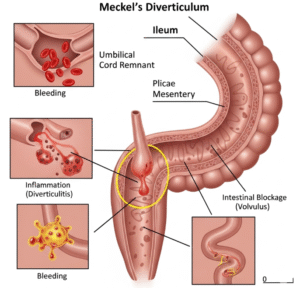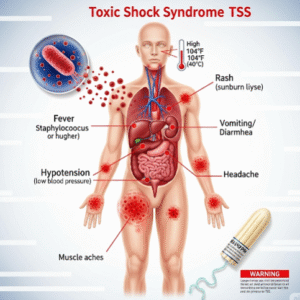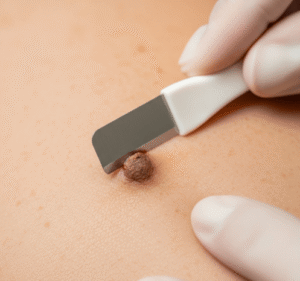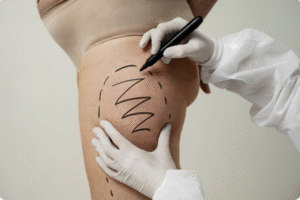Overview
A perforated eardrum, also known as a ruptured tympanic membrane, is a hole or tear in the thin tissue that separates the outer ear from the middle ear. This membrane plays a vital role in hearing and protecting the middle ear from bacteria and water. A perforation can lead to hearing loss, pain, and increased risk of infection, but in many cases, it heals naturally. In more serious cases, medical or surgical treatment may be required.
What is a Perforated Eardrum?
The eardrum (tympanic membrane) is a delicate, cone-shaped membrane that vibrates when sound waves strike it, transmitting sound to the middle and inner ear. When the membrane is torn or ruptured, sound transmission is disrupted and the middle ear becomes more vulnerable to infections.
A perforated eardrum can result from injury, infection, or sudden pressure changes. The size and location of the tear can affect the severity of symptoms and the healing process.
Symptoms
Signs and symptoms of a perforated eardrum can vary depending on the cause and size of the rupture, but commonly include:
- Sudden sharp ear pain, followed by relief as pressure releases
- Hearing loss in the affected ear
- Tinnitus (ringing or buzzing in the ear)
- Fluid or pus discharge from the ear (may be clear, bloody, or yellow)
- Vertigo or dizziness
- Fullness or pressure in the ear
- Fever, if infection is present
Some people may not notice any symptoms, especially if the perforation is small.
Causes
A perforated eardrum can result from various physical or pathological factors:
- Middle ear infection (otitis media): Pressure buildup from infection can rupture the membrane
- Sudden pressure changes (barotrauma), such as during flying, diving, or a loud blast
- Inserting objects into the ear (e.g., cotton swabs, hairpins)
- Loud noises or acoustic trauma
- Head or ear trauma, including skull fractures
- Surgical procedures (complications from ear tube insertion or other interventions)
Risk Factors
Several factors may increase the risk of developing a perforated eardrum:
- Frequent ear infections
- Exposure to sudden loud noises or air pressure changes
- Poor ear hygiene or using cotton swabs inside the ear canal
- Water sports or diving without proper protection
- History of eardrum injuries or surgeries
- Upper respiratory infections that spread to the middle ear
Complications
If left untreated or if healing is impaired, a perforated eardrum can lead to:
- Chronic otitis media (recurrent ear infections)
- Permanent hearing loss, particularly if the middle ear structures are damaged
- Chronic drainage from the ear (otorrhea)
- Cholesteatoma (abnormal skin growth in the middle ear that can damage bones)
- Balance problems or persistent vertigo
Most small perforations heal within a few weeks, but larger or complicated tears may need intervention.
Prevention
Preventing a perforated eardrum involves protecting the ears from trauma, infection, and pressure changes:
- Avoid inserting objects into the ear canal, including cotton swabs
- Treat ear infections early to prevent complications
- Use ear protection when exposed to loud noises or during water activities
- Equalize ear pressure when flying or diving (e.g., yawning, chewing gum, or using the Valsalva maneuver)
- Avoid flying with a cold or sinus infection, or use nasal decongestants
- Keep ears dry during recovery from ear infections or surgery
Treatment Options in Korea
South Korea provides advanced ENT (Ear, Nose, and Throat) care, including diagnosis and treatment of perforated eardrums. Many cases heal on their own, but others require medical or surgical management.
Diagnosis:
- Otoscope examination to view the eardrum
- Audiometry (hearing test) to assess hearing loss
- Tympanometry to evaluate eardrum movement and pressure
- CT scans in cases of trauma or chronic disease
Treatment Options:
- Watchful waiting: Many small tears heal within 2–4 weeks without treatment
- Antibiotic ear drops or oral antibiotics to prevent or treat infection
- Pain management: OTC pain relievers like acetaminophen or ibuprofen
- Ear protection: Keeping the ear dry and avoiding swimming
Surgical Treatments:
- Tympanoplasty: Surgical repair of the eardrum using a graft from nearby tissue
- Myringoplasty: A simpler version of tympanoplasty for small holes
- Ossiculoplasty: Repairing or replacing damaged bones in the middle ear (if needed)
Leading ENT Hospitals in Korea:
- Asan Medical Center, Seoul National University Hospital, Samsung Medical Center, and Severance Hospital offer high-quality ENT care, advanced microsurgery, and bilingual support for international patients.













